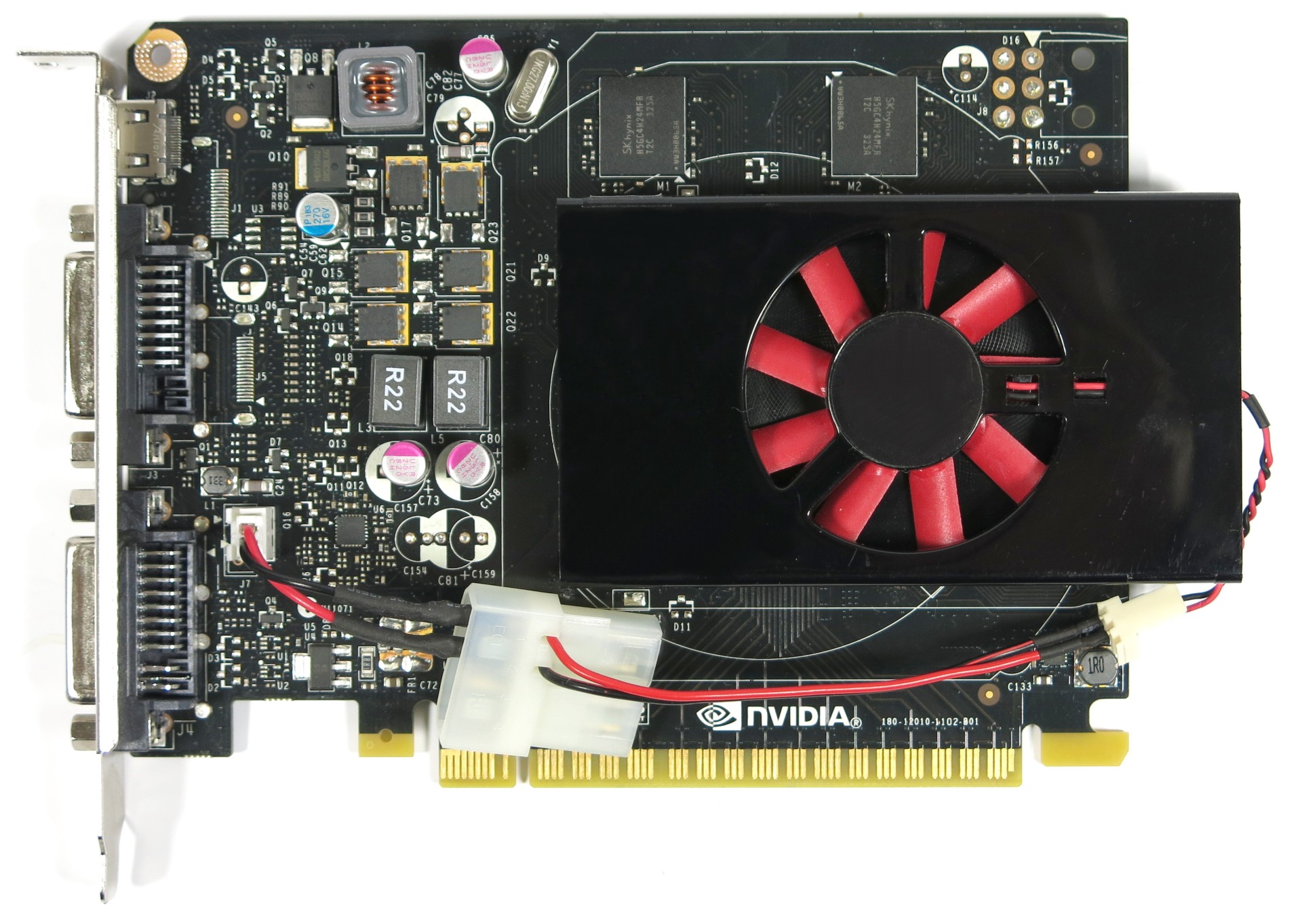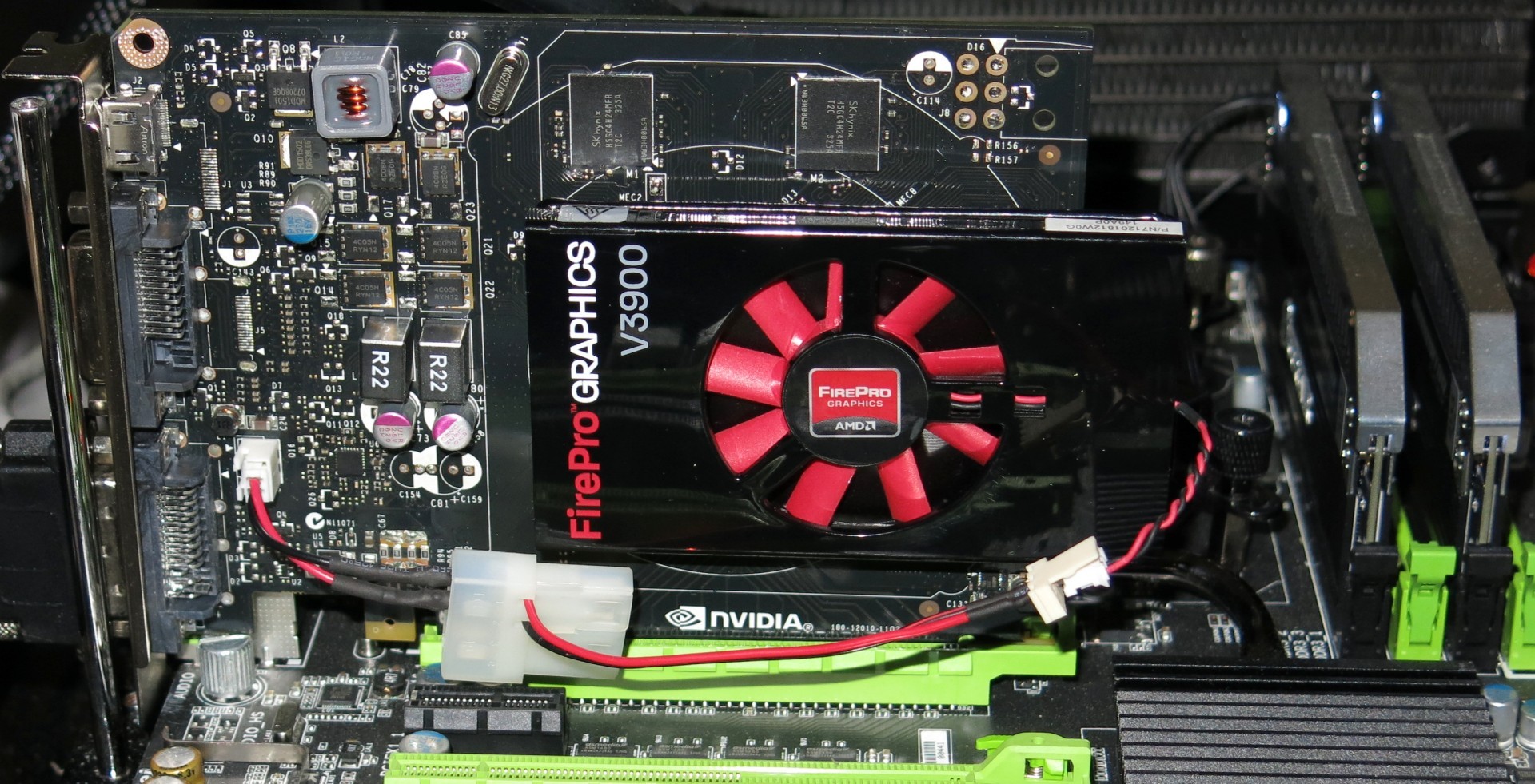Build Your Own: Single-Slot GeForce GTX 750 Ti
We already proved that it's possible to game on a GeForce GTX 750 Ti with a passive heat sink. Now we're going to do the same thing with a single-slot cooler. Can you build your own low-profile board based on GM107? Sure, if you have the right AMD donor.
Wrap-Up: Single-Slot GeForce GTX 750 Ti
Yes, this was only an experiment. But we couldn't resist the urge to try something that Nvidia's board partners should have tried right out of the gate. It proves that you can use the heat sink from a 50 W card (source by AMD, no less) to cool Nvidia's GM107 GPU in a single-slot form factor. Now think about a solution designed for GeForce GTX 750 Ti, rather than tacked on crudely. A better-fitting implementation designed to fill the PCB space would almost certainly facilitate better thermal performance, likely eliminating the delta between our reference and single-slot GeForce GTX 750 Ti cards, which was a result of lower GPU Boost clock rates.
Truly, our solution isn't optimized. It was another proof-of-concept that involved some craftiness. But it works, despite the minor performance hit and the...shall we say mis-matched brand colors?
At this point, it's up to the board partners as to when we might see a single-slot, low-profile, or passively-cooled GeForce GTX 750 Ti. The HTPC community would undoubtedly cheer, though we're not sure the segment is large enough to compel fast action.
But there is a lot of interest coming from the small form factor space. Right now, we see most vendors tucking dual-slot cards into cases built to accommodate them, if only barely. A single-slot version is even more flexible. We've shown that passive and low-profile cooling are both possible with the 60 W GM107 processor. The GPU is capable of a solid experience at 1920x1080. Hopefully, it's only a matter of time before both derivatives emerge, empowering PC enthusiasts with new ways to build attractive console alternatives.
Get Tom's Hardware's best news and in-depth reviews, straight to your inbox.
Current page: Wrap-Up: Single-Slot GeForce GTX 750 Ti
Prev Page Performance, Temperature, And Noise
Igor Wallossek wrote a wide variety of hardware articles for Tom's Hardware, with a strong focus on technical analysis and in-depth reviews. His contributions have spanned a broad spectrum of PC components, including GPUs, CPUs, workstations, and PC builds. His insightful articles provide readers with detailed knowledge to make informed decisions in the ever-evolving tech landscape
-
de5_Roy i've been waiting to read it for a while. it was very good.Reply
one aspect of gcn based radeons is that despite their low power use in entry level cards, all of them use higher amount of pwoer during bluray playback. both kepler and maxwell (gm107) use quite less. a single slot, low profile operation, a card with gpu like gm107 will be very suitable for htpc. not to mention the sheer amount of gaming performance advantage over other gfx card around the same power use. hopefully, the future 20nm gpus will introduce even more performance under the same power use. -
dish_moose I get a little cautious about making holes in multi layer pcbs and using metal screws. Without knowing the power plane structure and clearances, you gamble shorting out internal layers if you are not lucky/careful.-BruceReply -
jamesedgeuk2000 I think I have noticed a flaw with what you guys did here. The card only supply's power to the fan it doesn't regulate PWM or sense RPM, so am I correct in assuming that it's using voltage regulation to control fan speed and therefore doing it blind based on it's temperature curve? If so then as you have replaced the standard fan with a much weaker one you should really consider raising the fan curve to compensate.Reply -
CodeMatias Why not use a K2000 cooler? also nvidia small die so it might work better, and K2000 is ~80W so it should cool the 750ti just fine.Reply -
CodeMatias ReplyAnd now... fitting a Titan/780 Ti cooler to a 290X. ;)
Asus already did... It doesn't work, the 290X just draws too much power -
AndrewJacksonZA Reply
Yes silverblue, yes! :-)12865804 said:And now... fitting a Titan/780 Ti cooler to a 290X. ;)

